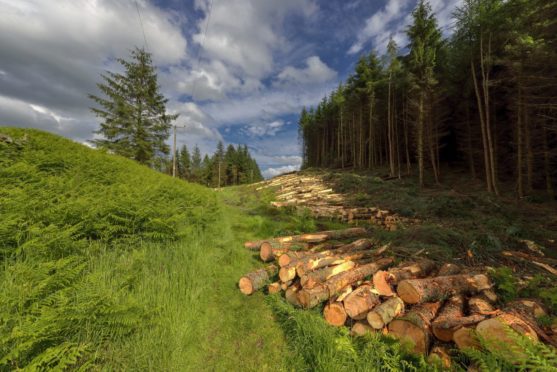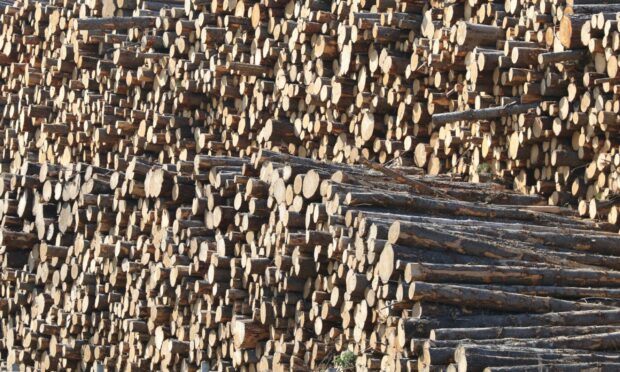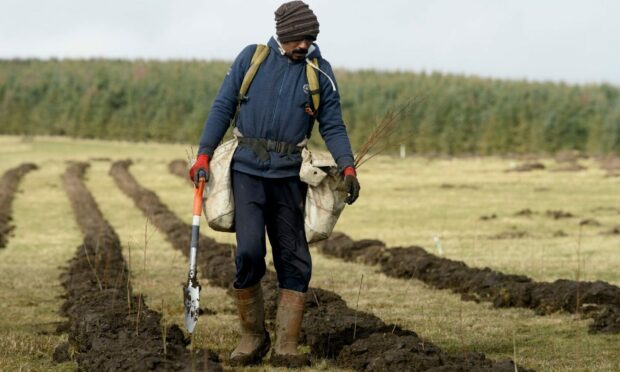When I started this job at the turn of the century I realised, to my horror, how little I understood about forestry.
I think that was probably the situation with many land agents who were protected from the forest industry by woodland managers.
The conflicts involving forestry that I became aware of while working as a land agent were either agricultural, or related to shooting.
Typically it would be about an angry gamekeeper when the harvesting machine started working in the middle of a shooting season – or attempts to access woodland over a tenanted farm.
When I started working in forestry, it was a steep learning curve at a time of rapid change.
There was incredible investment going into wood processing in the early 2000s.
Many smaller regional mills were closing down and larger, more professional and much more technologically advanced mills were being built to meet the need to process an extraordinary timber harvest.
The industry was processing one to two million tonnes of timber annually back then, and that grew within a decade to five million tonnes and now it’s about nine million – and that investment continues at sites like James Jones & Sons in Aboyne and BSW in Fort William.
Meanwhile, planting had fallen off a ledge from about 1990 after Nigel Lawson made his tax changes in 1988.
There was a backlash against the historic approach to afforestation and we moved into the era of developing more robust forest standards, to take a broader approach to all the environmental, economic and social benefits forestry delivers.
However, 20 years ago, the economic benefits for rural communities of woodland creation were very low on the priority list.
At the beginning of the century, the only new woodland that was being created was native woodland, supported by a very targeted grants system.
There then followed many years where we weren’t planting wood-producing forests, but that has now turned around as there is a huge demand for timber – and a much greater understanding of the value of trees and wood for climate change as well as the rural economy.
Climate change is a huge consideration now, and politicians can see the environmental benefits of growing trees and using wood.
Yet this is a relatively recent change, certainly in the last decade and specifically the last five years.
Looking back 20 years, political interest in – and understanding of – forestry and wood processing was very poor and transient.
But I like to think that Confor has led the way in getting to where we are now, where there is understanding and support for forestry embedded in mainstream political thinking, and increasingly in public attitudes too.
Fergus Ewing did a lot to drive more planting when he was forestry minister. He was an unusual politician who had a family background within the industry and understood that economic and environmental benefits could go together.
Current Forestry Minister Màiri McAllan also embraces those mutual benefits and it was great to see her visiting a large planting site in Perthshire recently and speaking so positively about modern, multi-purpose forestry.
We’re in a good place but we need to keep banging the drum.
Our industry is still hampered by some deliberate and mischievous misinformation, especially the criticism that nothing has changed since the 1970s and 80s.
Things have changed fundamentally but it suits some agendas to still hark back to the planting practices of the past.
That irritates me because I see a wonderfully diverse collection of people every day in my work who have an extraordinary dedication to their craft – and a commitment to do it to the highest standards.
My job has taken me all over Scotland, but I have a real passion for Perthshire and the Highlands.
I live between Perth and Crieff and driving up the A85 from Crieff to Lochearnhead just makes my heart soar as I see all those beautiful woods and forests.
It’s the same thing on the A9 going from Dunkeld up to Blair Atholl, and I also love Seafield’s Strathspey Estates, around Grantown-on-Spey.
As I prepare to retire from Confor, I’m very optimistic about the future of forestry and wood in Scotland.
We have political support, we’re planting more productive forests as well as native and we have a fantastic processing industry which we can be very proud of.
We’ve got good wood supplies for the next 10 years or so, and an increasing demand for timber.
People also see the other benefits that well-managed woodland delivers – for the climate and also for recreation and mental and physical health.
What’s not to be proud of and excited about?
- Jamie Farquhar retires next month as national manager for Scotland of the forestry and wood trade body Confor



